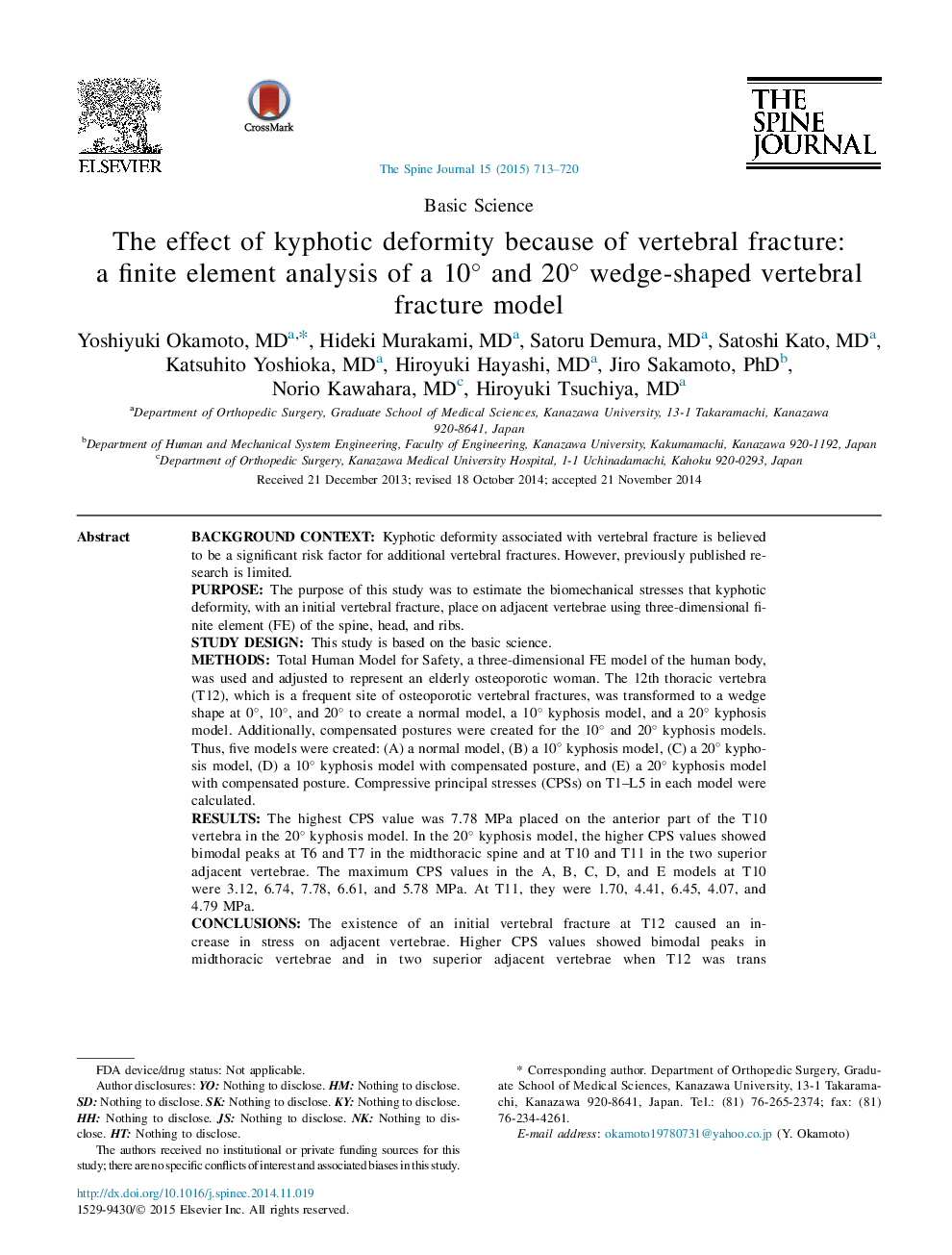| Article ID | Journal | Published Year | Pages | File Type |
|---|---|---|---|---|
| 4096359 | The Spine Journal | 2015 | 8 Pages |
Background contextKyphotic deformity associated with vertebral fracture is believed to be a significant risk factor for additional vertebral fractures. However, previously published research is limited.PurposeThe purpose of this study was to estimate the biomechanical stresses that kyphotic deformity, with an initial vertebral fracture, place on adjacent vertebrae using three-dimensional finite element (FE) of the spine, head, and ribs.Study designThis study is based on the basic science.MethodsTotal Human Model for Safety, a three-dimensional FE model of the human body, was used and adjusted to represent an elderly osteoporotic woman. The 12th thoracic vertebra (T12), which is a frequent site of osteoporotic vertebral fractures, was transformed to a wedge shape at 0°, 10°, and 20° to create a normal model, a 10° kyphosis model, and a 20° kyphosis model. Additionally, compensated postures were created for the 10° and 20° kyphosis models. Thus, five models were created: (A) a normal model, (B) a 10° kyphosis model, (C) a 20° kyphosis model, (D) a 10° kyphosis model with compensated posture, and (E) a 20° kyphosis model with compensated posture. Compressive principal stresses (CPSs) on T1–L5 in each model were calculated.ResultsThe highest CPS value was 7.78 MPa placed on the anterior part of the T10 vertebra in the 20° kyphosis model. In the 20° kyphosis model, the higher CPS values showed bimodal peaks at T6 and T7 in the midthoracic spine and at T10 and T11 in the two superior adjacent vertebrae. The maximum CPS values in the A, B, C, D, and E models at T10 were 3.12, 6.74, 7.78, 6.61, and 5.78 MPa. At T11, they were 1.70, 4.41, 6.45, 4.07, and 4.79 MPa.ConclusionsThe existence of an initial vertebral fracture at T12 caused an increase in stress on adjacent vertebrae. Higher CPS values showed bimodal peaks in midthoracic vertebrae and in two superior adjacent vertebrae when T12 was transformed to a wedge shape in the 20° kyphosis model.
